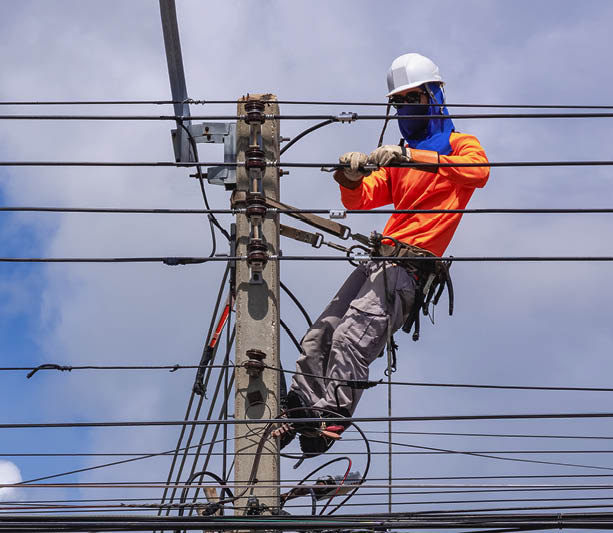-
Business Risk Services
Our Business Risk Services team deliver practical and pragmatic solutions that support clients in growing and protecting the inherent value of their businesses.
-
Consulting
Tailored consulting solutions that deliver measurable results through digital, regulatory and strategic transformation.
-
Corporate Finance and Deal Advisory
We offer a dedicated team of experienced individuals with a focus on successfully executing transactions for corporates and financial institutions. We offer an integrated approach, with our corporate finance specialists working seamlessly with tax and other specialists to ensure that every angle is covered.
-
Forensic Accounting
We have a different way of doing business by delivering real insight through a combination of technical rigour, commercial experience and intuitive judgment. We take pride in delivering responsive and tailored solutions to all our clients, capitalising on the wealth of experience housed within our Belfast and wider Forensics team
-
Restructuring
We work with a wide variety of clients and stakeholders such as high street banks, private equity funds, directors, government agencies and creditors to implement solutions which provide the best possible outcomes.

-
 Article FRS 102 Periodic Review series: Small companiesExplore key changes to small company disclosures under FRS 102 Section 1A, including UK GAAP updates on leases, tax, going concern and related parties.
Article FRS 102 Periodic Review series: Small companiesExplore key changes to small company disclosures under FRS 102 Section 1A, including UK GAAP updates on leases, tax, going concern and related parties. -
 Audit and Assurance FRS 102 Periodic Review series: Other changesOn 27 March 2024, the Financial Reporting Council issued amendments to FRS 100 – 105 (known as GAAP, or Generally Accepted Accounting Practice), a suite of accounting standards applicable in the UK and Ireland. These are used by an estimated 3.4 million businesses in preparing their financial statements.
Audit and Assurance FRS 102 Periodic Review series: Other changesOn 27 March 2024, the Financial Reporting Council issued amendments to FRS 100 – 105 (known as GAAP, or Generally Accepted Accounting Practice), a suite of accounting standards applicable in the UK and Ireland. These are used by an estimated 3.4 million businesses in preparing their financial statements. -
 Audit and Assurance ID Verification: Economic Crime & Corporate Transparency Act 2023Companies House is introducing mandatory identity verification requirements for Directors and People with Significant Control (PSCs), as the next step towards full implementation of the Economic Crime and Corporate Transparency Act 2023.
Audit and Assurance ID Verification: Economic Crime & Corporate Transparency Act 2023Companies House is introducing mandatory identity verification requirements for Directors and People with Significant Control (PSCs), as the next step towards full implementation of the Economic Crime and Corporate Transparency Act 2023. -
 Audit and Assurance FRS 102 Periodic Review series: Accounting for leasesOn 27 March 2024, the Financial Reporting Council issued amendments to FRS 100 – 105 (known as GAAP, or Generally Accepted Accounting Practice), a suite of accounting standards applicable in the UK and Ireland. These are used by an estimated 3.4 million businesses in preparing their financial statements.
Audit and Assurance FRS 102 Periodic Review series: Accounting for leasesOn 27 March 2024, the Financial Reporting Council issued amendments to FRS 100 – 105 (known as GAAP, or Generally Accepted Accounting Practice), a suite of accounting standards applicable in the UK and Ireland. These are used by an estimated 3.4 million businesses in preparing their financial statements.
-
Corporate and International Tax
Northern Ireland businesses face further challenges as they operate in the only part of the UK that has a land border with a country offering a lower tax rate.
-
Employer Solutions
Our team specialises in remuneration and incentive planning and works closely with employers, shareholders and employees to ensure that business strategies are aligned and goals achieved in the most tax efficient, cost-effective manner.
-
Entrepreneur and Private Client Taxes
Our team of experienced advisors are on hand to guide you through any decision or transaction ranging from the establishment of new business ventures, to realising value on exit, to succession planning and providing for loved ones.
-
Global Mobility Services
Grant Thornton Ireland offer a different approach to managing global mobility. We have brought together specialists from our tax, global payroll, people and change and financial accounting teams across Ireland and Northern Ireland, while drawing on the knowledge and insights of our global network of over 143 offices of mobility professionals to provide you with a holistic approach to managing global mobility.
-
Outsourced Payroll
Our outsourced service provides valued service to over 150 separate PAYE schemes. These ranging from 1 to 1000 employees, working for micro, SME and global employers. The service is supported by the integrated network of tax and global mobility teams and the wider Grant Thornton network delivering a seamless service. Experienced staff deliver a personal service built around your business needs.
-
Tax Disputes and Investigations
Our Tax Disputes and Investigation team is made up of tax experts and former HMRC investigators who have years of experience in dealing with a variety of tax investigations. Our expertise and insight can guide you through all interactions, keeping your cost at a minimum while allowing you to continue with the day to day running of your business.
-
VAT and Indirect Taxes
At Grant Thornton (NI) LLP, our team helps Northern Ireland businesses manage their UK and global indirect tax risks which, as transactional taxes, can quickly become big liabilities.

The enhanced capital allowances (ECA) scheme has been with us for over 15 years, but is often overlooked as an effective way to reduce tax liabilities.
The ECA scheme was introduced in 2001 to encourage business investment in energy efficient equipment. Approved ECA expenditure allows an organisation of any size to write-off the full cost of qualifying, energy-efficient purchases against their corporation or income tax in the year of investment. In ‘real’ terms, the participating business will reduce their tax bill and improve their cash flow position, with the potential of realising further energy cost savings, and reduce their carbon footprint.
For expenditure to qualify for ECAs, the purchased equipment must meet the technical requirements set out on the ‘Energy Technology Criteria List’ (ETCL). Fortunately, many products on the market have already received approval for ECAs and meet the efficiency requirements set by the Carbon Trust, a recognised, independent body. The equipment that ‘pre-qualifies’ for ECA are included on the ‘Energy Technology Product List’ (ETPL)
Technology that does not feature on the ETPL can still qualify for ECAs however, provided it meets the set criteria. Claimants will need to provide comprehensive supporting evidence in order to claim non-listed ECAs, but the necessary technical information can usually be provided by the manufacturer or installer.
To illustrate an example of an ECA claim, presume a business purchased £100,000 of qualifying, energy-efficient lighting in 2017. Under normal capital allowances, the company would receive special-rate relief of 8% capital allowances for qualifying ‘integral features’. This would ultimately translate into a real tax cash saving of £1,520, with the saving reducing each subsequent year. Under ECA, the company creates a real tax cash saving of £19,000 in 2017, with no further capital allowance relief in subsequent years.
Where a business does not have taxable profits to set the ECA claim against, it may elect to take a tax credit in lieu of the tax deduction, equal to 19% of the cost of the equipment.
ECAs offer a triple tiered benefit to businesses by reducing tax payable in the year of expenditure, reducing energy bills for the foreseeable future and making the organisation more socially responsible by reducing the carbon footprint.
Despite generating a cash saving from a tax perspective, energy efficient equipment typically is costlier than conventional alternatives. Business decision-makers should remain prudent and adequately analyse whether they will benefit from the ECA scheme. It is important to consider that energy bills will likely reduce, and also be conscious of the additional goodwill generated from being socially responsible.
As for all capital projects, considering the tax implications at an early stage is important. The identification of, and inclusion of, ECA qualifying assets at the planning stage can improve the overall efficiency of the project.



